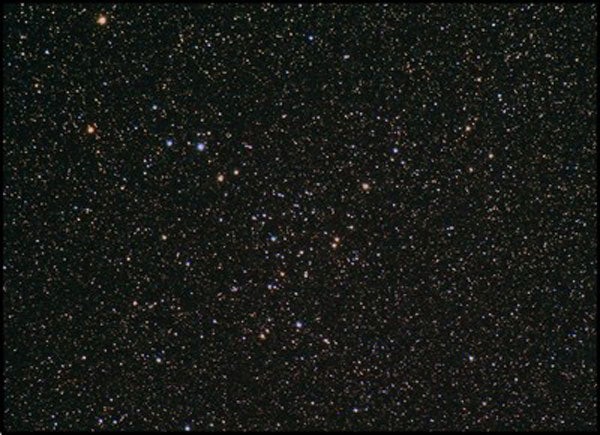When searching for planets with an Earth-like mass and an orbit that allows liquid water to exist on the surface, astronomers often search around stars the mass of the Sun and smaller. “The Ruprecht 147 cluster is very unusual and very important astrophysically because it is close to Earth, and its stars are closer to the Sun’s age than those in all the other nearby clusters,” Wright said. “For the first time, we now have a useful laboratory in which to search for and study bright stars that are of similar mass and also of similar age as the Sun. When we discover planets around Sun-like and lower-mass stars, we will be able to interpret how old those stars are by comparing them to the stars in this cluster.”
Wright’s team has shown that Ruprecht 147 is 800 to 1,000 light-years from Earth, which is so close that it is bright enough to be seen with binoculars in late-summertime skies in the constellation Sagittarius. “All of the other nearby clusters astronomers study contain stars much younger than the Sun, and all of the older stars are more than 3,000 light-years away,” Wright said. “So this cluster, being both old and close, provides a unique opportunity. Although it appears to be relatively large on the sky, the cluster can be difficult to spot because it is not very compact, and it is located in the densest, brightest region between Earth and the center of the Milky Way Galaxy.”
To study the Ruprecht 147 cluster, which is much larger on the sky than most objects astronomers study, Wright’s team had to use some specialized wide-field cameras — including those on the MMT telescope in Arizona and the Canada-France-Hawaii Telescope on Mauna Kea in Hawaii — in order to get its many stars within the frame of view. “Even with these wide-field cameras, we’ve had to build mosaics of images to cover the whole cluster and to take very quick snapshots so that we don’t overexpose the brightest stars,” Wright said. “Most modern telescopes weren’t designed for clusters so bright and close.”
When British astronomer John Herschel first discovered the object in 1830, he described it as “a very large straggling space full of loose stars.” He subsequently included it in the General Catalog of astronomical objects, which he compiled based on the observations of his father William Herschel. “The cluster was rediscovered in the 1960s by Jaroslav Ruprecht, which is how it got its current name, but until now, no astronomers paid it any special attention, probably because many presumed it was an asterism — a chance alignment of unrelated stars,” Wright said.
The team’s work has proven, for the first time, that the Ruprecht 147 cluster is only a bit younger than the Sun on the astronomical timescale. The stars in Ruprecht 147 are about 2.5 billion years old, or about half the age of the Sun, and about the age the Sun was when the first multicellular life emerged on Earth.
The team’s initial observations also have measured the distance to Ruprecht 147 as well as the directions and velocities of its stars to verify that they are moving together through space in three dimensions, both across the sky and in the same angle away from Earth. These observations confirm that these stars are members of a true cluster, not just a random pattern on the sky. Wright’s team already has identified 100 stars as members of the cluster and is working to find more.
“Our project with this important cluster is just beginning,” Wright said. “Eventually, it is going to let us find and study nearby stars with a mass like the Sun’s to help in the hunt for Earth-like planets and to test and improve the models astronomers use to understand the evolution of stars, including our own Sun.”










